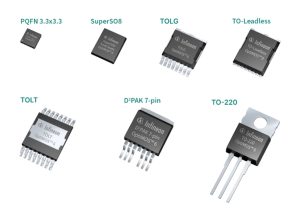There are 10 of them in a choice of packages: 7pin D2PAK (TO-263), 3.3 x 3.3mm PQFN, SuperSO8, TO-220, TO-Leadless (HSOF-8), TOLG (HSOG-8) or TOLT (HDSOP-16).
Rds(on) values range across 2 to 14.3mΩ with 10V on the gate, where gate charge is in the 14.3 to 21nC range – roughly increasing as Rds(ON) decreases. Operation is across -5 to +175°C.
The company emphasises low reverse recovery charge and low gate threshold spread so, picking the TO-220, 7.3mΩ, 98A, 43nC Qgate (0 – 10V) IPP073N13NM6 at random, reverse recovery is typically 81nC (162nC max) at 68V, 20A, 500A/µs, and gate threshold is between 2.5 and 3.5V.
Applications are foreseen in light electric vehicles, forklifts, power tools, gardening tools and uninterruptable power supplies.
These are made using the company’s industrial OptiMos 6 process, and are intended to offer an intermediate step between its 120 and 150V ranges.
According to Infineon, its generation 6 mosfets have up to 50% less on-resistance compared with its fifth generation, and a faster but softer body diode, with less reverse recovery charge.
On the same day as the 135V parts, it also introduced some 150V OptiMos 6 mosfets, 11 of them this time, in the same range of packages.
As well as light electric vehicles and forklifts, these are aimed at telecom and server PSUs, and solar optimisers and high-power USB chargers.

